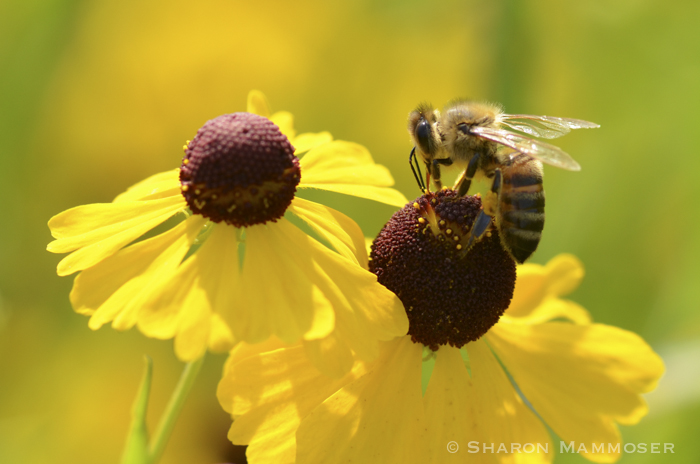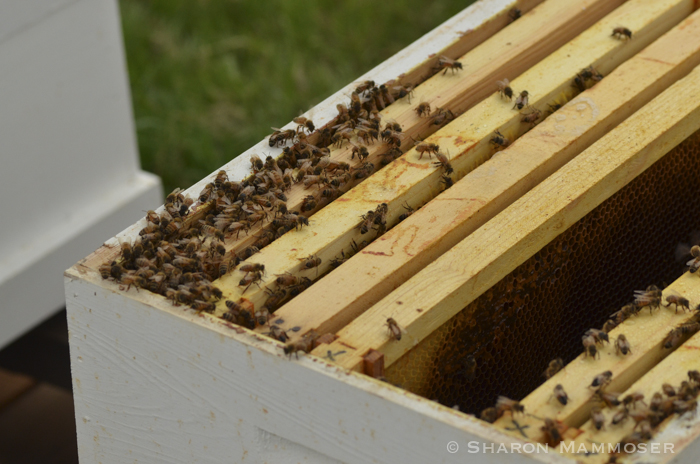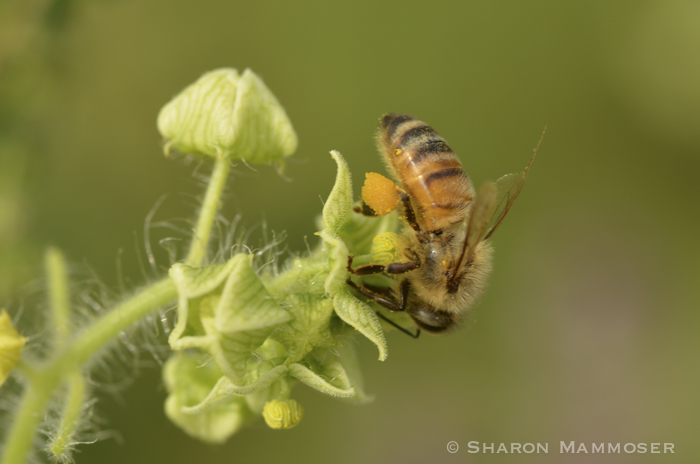
Honey bees are really amazing little creatures that fascinate me with all of their cool adaptations. Most of us see them now and then but probably don’t pay them all that much attention unless we happen to be unlucky enough to get stung. Then we sit up and take notice, wondering at the power of such a small animal to cause such a big pain. Honey bees are non-aggressive, stinging only when they feel a threat to the hive. And yes, it’s true, they die after they use their stinger since it is barbed and will rip apart the bee’s abdomen when she pulls it out.
The truth is, we need honey bees whether we know it or not as 1/3 of all the food we eat is pollinated by bees. Here are ten other things you may not know about honey bees.
1. If not for honey bees we wouldn’t have many of the foods we find in our grocery stores such as cucumbers, mellows, cherries, strawberries, avocados, blueberries, apples, plums, pears and kiwi.
2. Honey bees communicate with other honey bees through a “waggle dance.” This dance lets other bees know many things, including the direction and quantity of the flowers.
 3. Honey bees live together in a complex colony that during the summer, may have up to 80,000 individuals. Nearly all of these are female worker bees who will have many jobs throughout their lifetimes including, guard, forager, undertaker, nurse, temperature regulator, cleaner, etc. Worker bees live about 6 weeks during the summer and about 4-9 months during the winter. A hive will also have one queen bee and some male drones whose only job is to mate with the queen. The drones are chased from the hive before winter and will die.
3. Honey bees live together in a complex colony that during the summer, may have up to 80,000 individuals. Nearly all of these are female worker bees who will have many jobs throughout their lifetimes including, guard, forager, undertaker, nurse, temperature regulator, cleaner, etc. Worker bees live about 6 weeks during the summer and about 4-9 months during the winter. A hive will also have one queen bee and some male drones whose only job is to mate with the queen. The drones are chased from the hive before winter and will die.
4. Honey bees are the only insect that produces a food humans eat–honey. A bee visits 50-100 different flowers during a pollen collection trip. The workers in one hive might fly the equivalent of three trips around the earth or 90,000 miles in order to make a little over 2 pounds of honey. In her lifetime of 6 weeks during the summer, a worker bee makes about 1/12th of a teaspoon of honey. Honey is an amazing food–with all the substances necessary to sustain life including enzymes, vitamins, minerals and water.
5. Honey bees do not die, migrate or hibernate during winter! Instead, they stay active within their hive, requiring 60 pounds of honey to sustain them. This amount will support 20,000-30,000 bees, all of them female.
 6. The queen honey bee stores a lifetime worth of sperm. After emerging as an adult, she will need to mate within 20 days or will lose her ability to lay eggs. In her lifetime of on average, 5 years, she can lay more than a million eggs! Each day she might lay more than 2000 eggs!
6. The queen honey bee stores a lifetime worth of sperm. After emerging as an adult, she will need to mate within 20 days or will lose her ability to lay eggs. In her lifetime of on average, 5 years, she can lay more than a million eggs! Each day she might lay more than 2000 eggs!
7. Honey bees keep their cluster within the hive all year at a constant temperature of 93 degrees. In the summer if it gets too hot, worker bees will leave the hive to collect water droplets that they will bring back to the hive all allow to evaporate. In winter the cluster of bees beats their wings rapidly to generate heat.
8. Honey bees have an amazing sense of smell, with 170 odorant receptors. In comparison, fruit flies have 62 and mosquitoes have 79 odorant receptors. Their well-develped sense of smell helps them recognize other members of their hive and in finding flowers.
9. A honey bee has 3 body parts, six legs, a pair of antennae, compound eyes and four wings that can beat up to 200 times each second! That means that in one minute, she might beat her wings 12,000 times! They can travel up to 15 mph.
10. Honey bees are not native to North America. Instead they were brought here from Europe by early settlers.


1 thought on “Ten Things You May Not Know About Honey Bees”
Comments are closed.